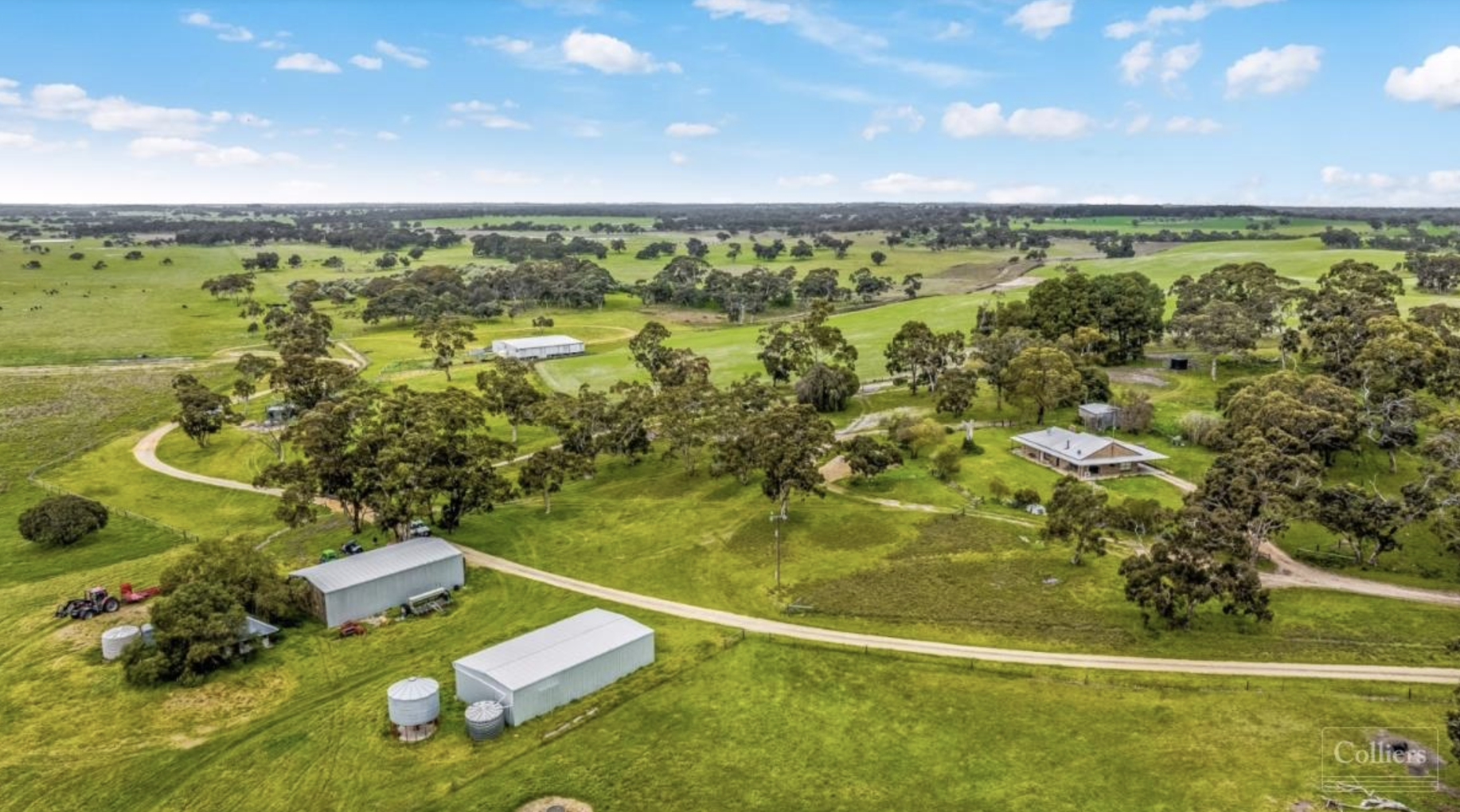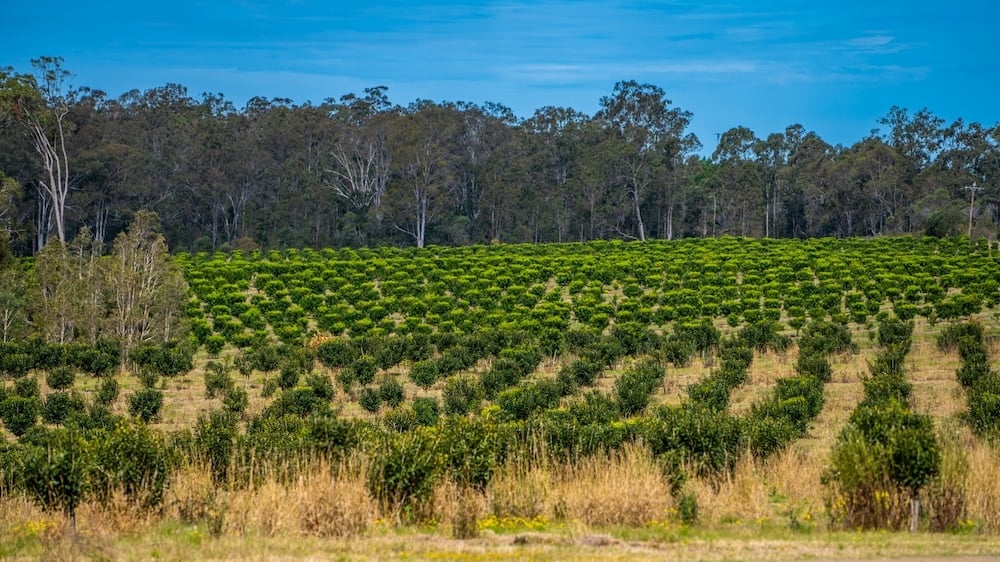Inside this year’s biggest farm sales
Australia’s biggest farm sales of 2025, as reported on by AuctionsPlus, delivered another year of blockbuster rural transactions, led by the roughly...
4 min read
 Kylie Dulhunty
:
Jan 7, 2025
Kylie Dulhunty
:
Jan 7, 2025

Demand for natural capital, interest rates and even the political moves of US president-elect, Donald Trump, could influence Australia’s rural property market this year, according to industry experts.
Knight Frank Head of Agribusiness Valuations and Advisory in Australia, Jason Oster said with inflation under control and livestock markets recovering in the later half of 2024, land values had held up well and confidence was returning to the rural property market.
He said demand for green investments in the rural market were increasing among corporate buyers as they looked to meet ESG targets.
Knight Frank’s Rural Report 2024/2025 highlighted that institutional investors were finding it easy to raise funds to invest in agriculture at scale.
“Centuria Capital's agricultural fund has, for example, invested over $400 million in protected cropping assets in recent acquisitions,” Mr Oster said.
“Large-scale opportunities involving natural capital are particularly sought after.
“There has definitely been an increase in demand for assets such as low-rainfall pastoral grazing that have the potential to sequester carbon.”
Mr Oster said while premiums were being paid for such properties, it was a developing market with variation in the appetite for the income from carbon credits.
“It’s a bit of a dark art, but big businesses are keen to own such assets because it helps them with their ESG stories,” he said.
Mr Oster said new mandatory sustainability reporting requirements would be rolled out in Australia from the start of the next financial year, with big businesses to be affected first, while rural properties would help corporates with ESG solutions.
-jpg.jpeg?width=649&height=365&name=Jason%20Oster%20(002)-jpg.jpeg)
Knight Frank Head of Agribusiness Valuations and Advisory in Australia, Jason Oster. Pic: Supplied
“We expect the mandatory sustainability reporting to lead to greater investment in agribusiness assets with strong natural capital attributes,” he said.
Mr Oster said the farmland market had a positive outlook for 2025.
“It feels like confidence is starting to return as inflation is back under control and livestock markets are recovering,” he said.
“Land values are holding up pretty well. There has also been good news for the vineyard market as the punitive Chinese tariffs on Australian wine have been lifted.”
LAWD Senior Director Col Medway said 2024 had largely been a “stop-start” year in terms of intermittent buyer interest and inquiry, but that had started to change in the lead-up to Christmas.
“I think the market is just starting to find its feet and I think we’re starting to turn the corner,” he said.
“What we’ve got now is a more normal market.”
-jpg.jpeg?width=542&height=305&name=Col%20Medway%20(002)-jpg.jpeg)
LAWD Senior Director Col Medway. Pic: Supplied
Mr Medway said grazing land in Central Queensland had performed well in 2024 and that would continue this year.
He also noted that cropping country north of Dubbo recorded solid results.
“There’s been a contrast in seasonal conditions across the east coast of Australia,” he said.
“If you draw a line north of Dubbo, then Northern and Central NSW, through to Southern Queensland, had an outstanding cropping season, with really strong yields backed up by pretty handy commodity prices, so that’s probably going to provide some impetus for more buyer activity up there.
“However, in Southern NSW, through to Victoria and South Australia, we’ve had the double whammy of less than optimal seasonal conditions but also some pretty wide impact of frost and, unfortunately, a triple whammy of a wet harvest.”
Colliers National Director of Transaction Services/Agribusiness, Jesse Manuel, said the agency’s transaction volumes were lower in 2024 but the second half of the year was significantly more buoyant.
“Three quarters of farm sales we completed this year occurred in the second half, which just shows that the market is gaining momentum after a difficult start to the growing season in southern Australia, which improved moderately as the season progressed,” he said.
“The first half of 2024 was very similar to market sentiment at the back end of 2023.
“The market was still adjusting to the increased cost of debt and much of debt and much of southern Australia was experiencing dry conditions.
“However, in the second half of the year, with better livestock prices and improved seasonal conditions, we have seen increased levels of competitive tension at the pointy end of sale processes for properties.”

Colliers National Director of Transaction Services/Agribusiness, Jesse Manuel. Pic: Supplied
Mr Manuel said the sale of the six-farm Fairview Aggregation at Lucindale was symbolic of this and a vote of confidence in the South Australian market for livestock properties.
He said when the property was first listed in 2023, buyers were ultra cautious due to a peak in interest rates and a correction in red meat prices, but strong enquiry returned once livestock prices lifted and interest rates remained steady.
From a grazing perspective, Mr Manuel agreed that Central Queensland was one region where there had been both a reasonable supply of property and sufficient depth in the market.
In the cropping sector, he said moderate rainfall regions of 400mm and above, in areas where buyers could access scale, had seen a lot of enquiry.
“The buyer profile in 2024 has continued to be very even between private families and the corporate and institutional buyers,” Mr Manuel said.
“Traditionally, what we’ve seen in the past is when the cost of funding increases, it is the institutional investors that have cash become the most active buyers in the market, however due to the family farming operators being a bit more nimble and from due diligence perspective, these participants have also remained very active.
“One noticeable change is the increase in enquiry and purchasing mandates from off-shore high net-worth individuals.
“Especially from the US where the exchange rate makes for a very compelling case for investment in Australia.
“Just looking at the weight of institutional capital looking to be deployed, especially in the grains sector, I think we’ll see some significant transactions for dryland and irrigated cropping assets in 2025 and I suspect many of these assets will be traded between institutional investors as some look to recycle capital or expand portfolios”
Elders General Manager, Farmland Agency and Water, Mark Barber, said Western Australia had also held its ground in 2024, with fairly low turnover, good demand for large scale dry land operations and steady prices.

Elders General Manager, Farmland Agency and Water, Mark Barber. Pic: Supplied.
This year he tipped confidence would continue to grow in the areas that experienced a good harvest.
“I think the industry is looking for a bit of direction on interest rates, but if we see interest rates starting to soften in Australia, I think we’ll see more confidence coming in,” he said.
“And if we see our currency continue to slide against the US dollar, then it does represent better value for offshore buyers.”
Mr Barber said China removing trade restrictions on Australian exports would create more confidence in the beef and wine sectors and this could be strengthened further if US President-elect Donald Trump pushes ahead with plans to impose levies on foreign goods.
“If China retaliates with any sort of import restrictions on US agricultural imports then we’ll probably see China looking for new sources, particularly of beef, grains, oilseeds and potentially wine,” he said.
“We could be the beneficiaries from that.”
Kylie Dulhunty is a journalist with more than 20 years experience covering everything from court to health. Today, Kylie loves nothing more than turning market trends, industry insights and epic property sales - residential, rural and commercial into captivating stories.
Posts By Tag
.png)
Australia’s biggest farm sales of 2025, as reported on by AuctionsPlus, delivered another year of blockbuster rural transactions, led by the roughly...

Each week, we take the pulse of rural property - from sales data to who’s making headlines. Check out this week's report from Kylie Dulhunty.

Each week, we take the pulse of rural property - from sales data to who’s making headlines. Check out this week's report from Kylie Dulhunty.